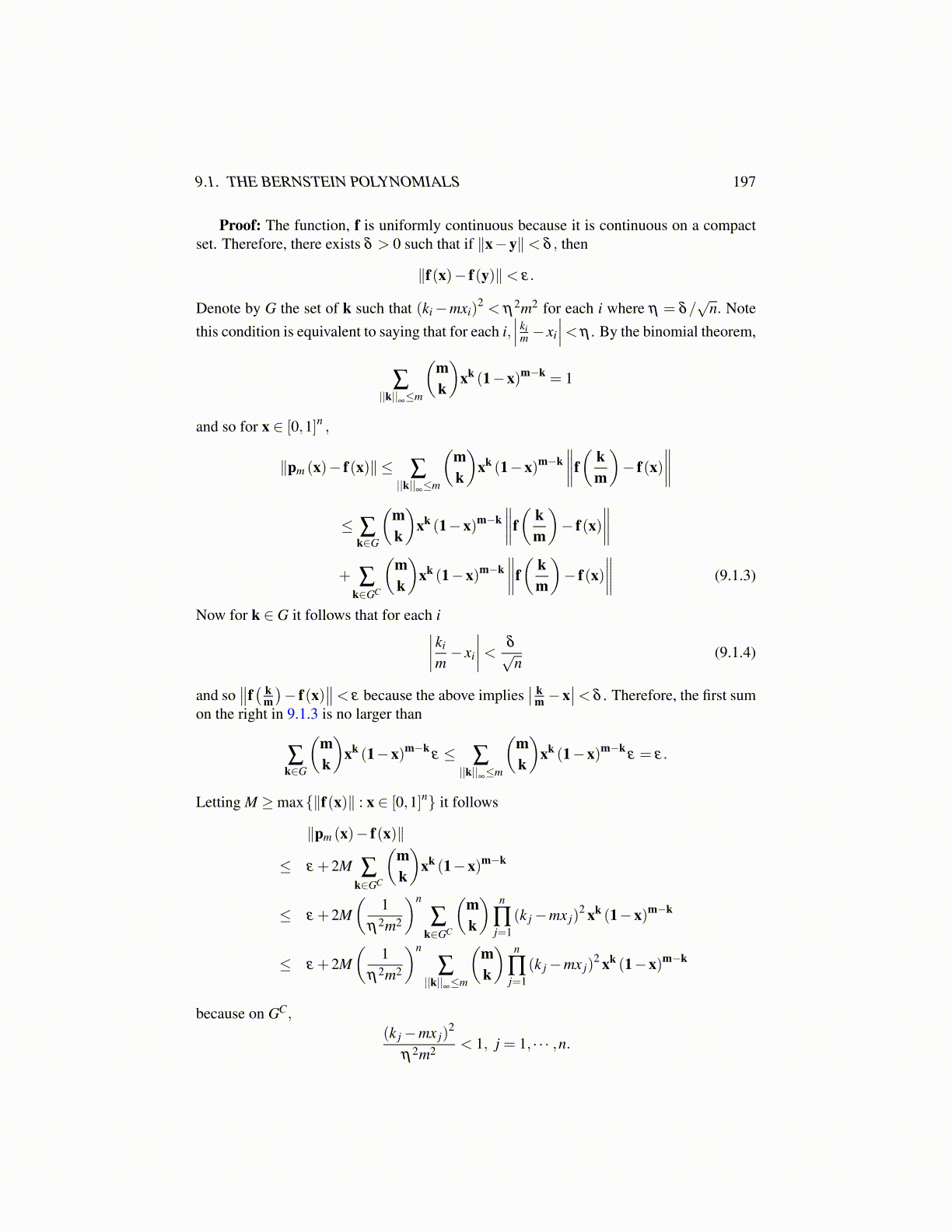
9.1. THE BERNSTEIN POLYNOMIALS 197
Proof: The function, f is uniformly continuous because it is continuous on a compactset. Therefore, there exists δ > 0 such that if ∥x−y∥< δ , then
∥f(x)− f(y)∥< ε.
Denote by G the set of k such that (ki−mxi)2 < η2m2 for each i where η = δ/
√n. Note
this condition is equivalent to saying that for each i,∣∣∣ ki
m − xi
∣∣∣< η . By the binomial theorem,
∑||k||∞≤m
(mk
)xk (1−x)m−k = 1
and so for x ∈ [0,1]n ,
∥pm (x)− f(x)∥ ≤ ∑||k||∞≤m
(mk
)xk (1−x)m−k
∥∥∥∥f(
km
)− f(x)
∥∥∥∥≤ ∑
k∈G
(mk
)xk (1−x)m−k
∥∥∥∥f(
km
)− f(x)
∥∥∥∥+ ∑
k∈GC
(mk
)xk (1−x)m−k
∥∥∥∥f(
km
)− f(x)
∥∥∥∥ (9.1.3)
Now for k ∈ G it follows that for each i∣∣∣∣ki
m− xi
∣∣∣∣< δ√n
(9.1.4)
and so∥∥f( k
m)− f(x)
∥∥< ε because the above implies∣∣ k
m −x∣∣< δ . Therefore, the first sum
on the right in 9.1.3 is no larger than
∑k∈G
(mk
)xk (1−x)m−k
ε ≤ ∑||k||∞≤m
(mk
)xk (1−x)m−k
ε = ε.
Letting M ≥max{∥f(x)∥ : x ∈ [0,1]n} it follows
∥pm (x)− f(x)∥
≤ ε +2M ∑k∈GC
(mk
)xk (1−x)m−k
≤ ε +2M(
1η2m2
)n
∑k∈GC
(mk
) n
∏j=1
(k j−mx j)2 xk (1−x)m−k
≤ ε +2M(
1η2m2
)n
∑||k||∞≤m
(mk
) n
∏j=1
(k j−mx j)2 xk (1−x)m−k
because on GC,
(k j−mx j)2
η2m2 < 1, j = 1, · · · ,n.